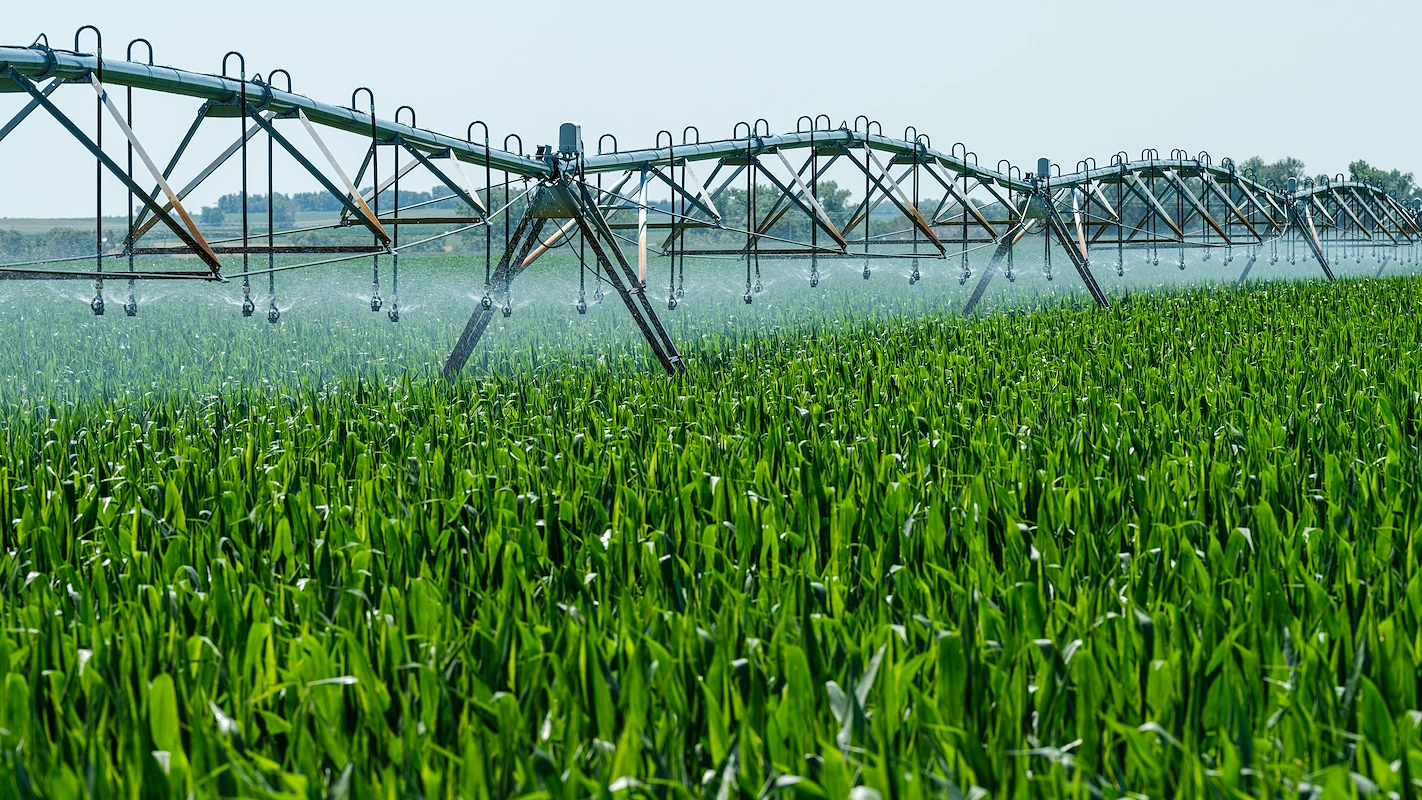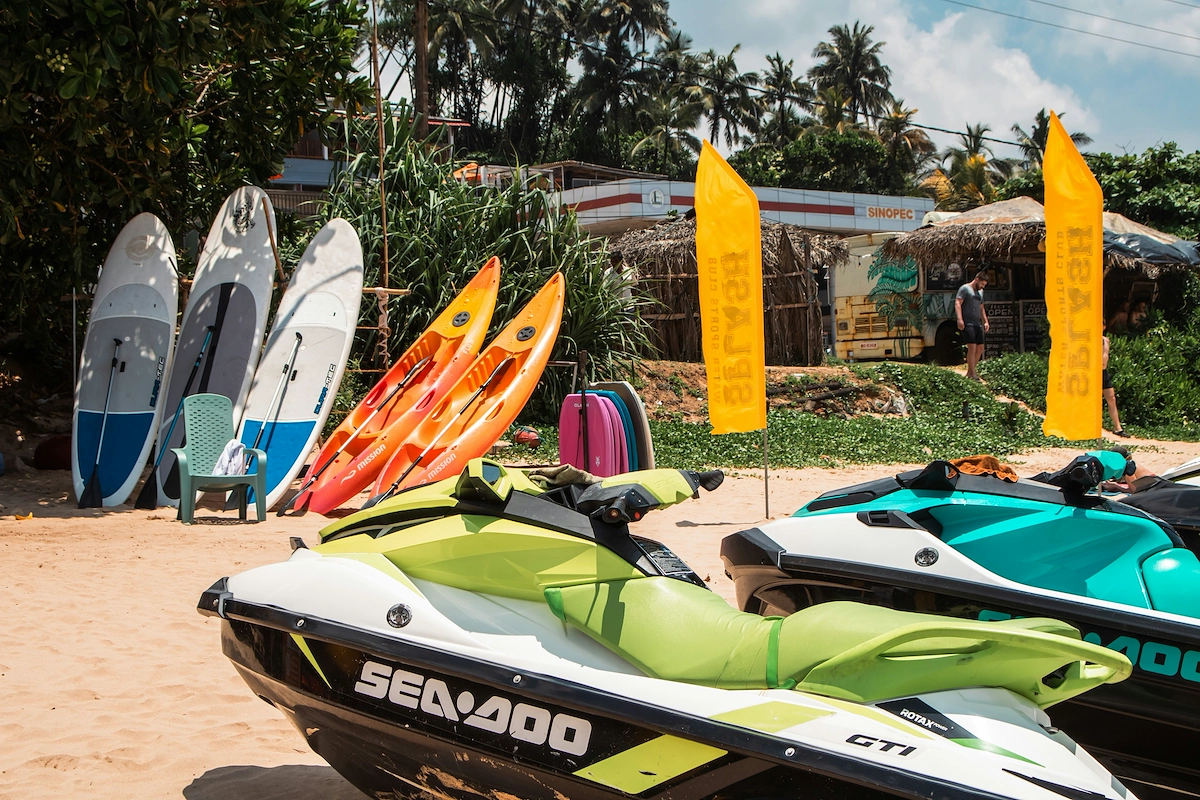Starting an irrigation business is a rewarding venture that combines technical skills like water management with solid business savvy. The industry is worth billions, with consistent demand for installation and maintenance from homeowners, commercial properties, and farms.
This guide will take you through the practical steps of obtaining licenses, acquiring the right equipment, securing funding, and building supplier relationships to help you launch a successful irrigation business in the U.S.
Step 1: Plan your business and validate the idea
Begin by researching your local market. Drive through new housing developments and established neighborhoods to gauge demand. You can also talk to real estate agents or property managers to understand what services are most requested in your area.
Next, analyze your competition. Use Google Maps to find other irrigation services nearby. Review their websites and customer feedback on platforms like Yelp or Angi to see what they offer, their service quality, and potential gaps you could fill.
Estimate your startup costs
With a clearer market picture, you can map out your finances. Startup costs typically range from $15,000 to $30,000. A common oversight is forgetting to budget for general liability insurance, which can run $1,000 to $3,000 annually but protects your assets.
Here is a sample cost breakdown:
- Vehicle & Major Equipment: A used work truck ($10,000-$20,000) and a trencher ($3,000-$5,000) are the largest expenses.
- Tools: Plan for $1,000-$2,000 for hand tools, wire locators, and other necessary gear.
- Business Overhead: Set aside $1,500-$4,000 for LLC formation, licenses, and initial marketing like business cards.
Here are 3 immediate steps to take:
- Identify five local competitors and list the specific services they advertise.
- Contact your local Small Business Administration (SBA) office for free market data reports.
- Create a detailed spreadsheet to budget for your initial equipment, insurance, and licensing fees.
Step 2: Establish your legal entity and secure licenses
Most new irrigation business owners choose a Limited Liability Company (LLC). This structure protects your personal assets if the business faces a lawsuit. Profits also pass through to your personal tax return, which simplifies bookkeeping compared to a corporation. Filing for an LLC typically costs $50 to $500.
Secure the right licenses and permits
Once registered, get a free Employer Identification Number (EIN) from the IRS website. State licensing varies widely. Texas, for instance, requires an Irrigator License from the TCEQ, while California requires a C-27 Landscaping Contractor license. These often involve an exam and fees around $300-$500.
For individual jobs, you will likely need local plumbing or building permits. These can cost $50 to $200 and take a few days to process. A costly mistake is starting work before a permit is approved, as this can lead to fines, so always wait for the paperwork.
Here are 4 immediate steps to take:
- Decide on an LLC and visit your Secretary of State's website to begin registration.
- Apply for a free EIN directly from the IRS website.
- Search your state's contractor licensing board for "irrigation" or "landscape" requirements.
- Call your local city planning department to confirm their process for plumbing permits.
Step 3: Get the right insurance to manage risk
With your legal entity set, the next move is to protect it. General liability insurance covers property damage and injuries. A stray trencher hitting a utility line is a real risk, so a policy with $1 million in coverage is standard. This typically costs $1,000 to $3,000 per year.
Your work truck also needs its own commercial auto policy. A personal auto plan will not cover accidents that happen on the job. Expect to pay around $1,500 to $2,500 annually for sufficient coverage. This is an area where new owners often try to cut corners, creating a major financial risk.
Once you hire your first employee, you must have workers' compensation insurance. In addition, consider professional liability insurance, which protects you if a system design fails and causes damage. You might want to look into providers like Hiscox, Next Insurance, or The Hartford, as they specialize in trade businesses.
Here are 4 immediate steps to take:
- Request quotes for a $1 million general liability policy.
- Confirm with your auto insurer that your personal policy excludes business use.
- Research your state's specific workers' compensation requirements for new employers.
- Contact an agent who specializes in contractor insurance to compare rates.
Step 4: Secure your space and gear up
Many contractors start from a home garage to keep overhead low. You will need at least 200-500 square feet for parts and tools. Check local ordinances for rules on parking a commercial vehicle at your residence, as some neighborhoods have restrictions.
As you grow, you might want a small warehouse bay or a large storage unit (500-1,000 sq ft) in a light industrial zone. When you negotiate a lease, ask for a 1-2 year term instead of the standard 3-5 years. This gives you more flexibility as your business expands.
Purchase your primary equipment
A work truck is your biggest purchase, but you can defer other major costs. Instead of buying a trencher immediately, consider renting one for $200-$400 per day for your first few jobs. This move protects your cash flow while you build a client base.
You will need other gear to handle installations and repairs. Here is a basic list with typical costs:
- Wire and Valve Locator: A model like the Armada Pro800D runs $700-$900.
- Multimeter: This is for electrical diagnostics and costs $50-$150.
- Hand Tools: Budget $500-$1,000 for shovels, pipe cutters, and crimpers.
With your equipment list ready, open accounts with irrigation suppliers. National chains like SiteOne Landscape Supply and Ewing Irrigation & Landscape Supply let you open a cash account easily. This gives you access to contractor pricing without a credit check or minimum orders.
Here are 4 immediate steps to take:
- Check local zoning laws for home-based businesses with commercial vehicle parking.
- Get rental quotes for a trencher from a local equipment rental shop.
- Open a cash account at a supplier like SiteOne or Ewing Irrigation.
- Create a shopping list for hand tools and a wire locator.
Step 5: Set up your payment system
Establish your payment terms
For new installations, it is standard to request a 50% deposit to cover materials, with the balance due upon completion. For smaller repair jobs or seasonal maintenance, you will typically collect the full payment on the spot once the work is finished.
A mistake some new owners make is only accepting checks, which can delay your cash flow. Offering credit card and digital wallet payments makes your business appear more professional and ensures you get paid faster. It also improves the customer experience.
Choose a payment solution
For an irrigation business that needs to accept payments on-site, JIM offers a streamlined solution. With JIM, you can accept debit, credit, and digital wallets directly through your smartphone. Just tap and the payment is done.
At just 1.99% per transaction with no hidden costs or extra hardware, it is a cost-effective choice. Other providers often charge 2.5% to 3.5% plus fees. It is particularly useful for collecting payment immediately after a quick sprinkler head replacement or a service call.
Getting started is straightforward:
- Get Started: Download the JIM app for iOS.
- Make a Sale: Type the sales amount, hit sell, and ask your customer to tap their card or device on your phone.
- Access Funds: Your money is available right on your JIM card as soon as the sale is done, with no waiting for bank transfers.
Here are 4 immediate steps to take:
- Draft your standard payment terms (e.g., 50% deposit) for your service agreement.
- Decide which payment methods you will accept, including checks, cards, and digital wallets.
- Download the JIM app to explore its interface and features.
- Compare JIM's 1.99% rate with two other payment processors to confirm the savings.
Step 6: Secure funding and manage your finances
Find the right funding source
The SBA 7(a) loan is a popular option for new trade businesses. You can typically secure $25,000 to $50,000 with a good business plan and a credit score over 680. Interest rates usually hover a few points above the prime rate. Equipment financing is another route for your truck or trencher.
These loans use the equipment itself as collateral, which can make them easier to qualify for than a standard business loan. Some new owners make the mistake of using personal credit cards for business expenses, which mixes finances and often comes with much higher interest rates.
Calculate your working capital
You will need enough cash to cover operating costs for the first three to six months before your client base is stable. This working capital should cover fuel, insurance, marketing, and supplies. A safe estimate is to have $10,000 to $15,000 set aside purely for these expenses.
Your first financial move should be to open a dedicated business checking account. This separates your personal and business finances, which makes tax time much simpler. You might also want to look into accounting software like Wave (free) or QuickBooks Simple Start to track income and expenses from day one.
Here are 4 immediate steps to take:
- Research SBA 7(a) loan requirements on the official SBA website.
- Contact your bank to open a separate business checking account.
- Create a spreadsheet to estimate your operating costs for the first six months.
- Compare basic accounting software like Wave and QuickBooks.
Step 7: Hire your team and set up operations
Build your field team
Your first hire will likely be an Irrigation Technician. This person handles installations, repairs, and client communication. A typical pay range is $18 to $25 per hour. While not always required, a certification from the Irrigation Association (IA) shows a higher skill level.
A frequent misstep is hiring someone without checking their driving record. A poor record can significantly increase your commercial auto insurance premiums, so always run a check. As a rule of thumb, each field technician should generate two to three times their annual salary in revenue.
Streamline your daily operations
With a team member on board, you need a system to manage jobs. Field service software like Jobber or ServiceTitan helps with scheduling, dispatching, and invoicing. These platforms often start around $50-$150 per month and can save hours of administrative work.
They also create a professional customer experience with automated appointment reminders and digital quotes. This organization prevents missed appointments or lost paperwork, which can damage your reputation early on.
Here are 4 immediate steps to take:
- Draft a job description for an Irrigation Technician, including key responsibilities.
- Look up the Certified Irrigation Technician (CIT) requirements on the Irrigation Association website.
- Schedule a demo for a field service software like Jobber.
- Calculate a revenue target for your first hire based on their projected salary.
Step 8: Market your business and find customers
Start with local marketing
Your first customers will likely come from your immediate area. A well-optimized Google Business Profile is your most powerful free marketing asset. Fill it out completely and upload photos of your truck and past work. Aim to get 5-10 customer reviews within your first 90 days.
You might also consider old-school methods like door hangers. Target new housing developments or neighborhoods with mature landscapes. A spend of $200 on 1,000 flyers can generate 5 to 20 leads, a solid return as you get started.
Build a referral network
Connect with other professionals who serve homeowners. Landscape designers, home builders, and lawn care companies are excellent sources for referrals. You could offer them a flat fee, like $100, for every installation job they send your way. A referral from a trusted source closes at a much higher rate.
Many new owners make the mistake of not tracking where their leads come from. You need to know if your money spent on marketing is actually effective. A simple spreadsheet helps you calculate your Customer Acquisition Cost (CAC) for each channel.
Here are 4 immediate steps to take:
- Create and fully verify your Google Business Profile.
- Design and print 1,000 door hangers for a specific target neighborhood.
- List three local home builders or landscapers to contact for partnerships.
- Set up a spreadsheet to track the source of every new lead.
Step 9: Develop your pricing strategy
Choose your pricing model
Most irrigation pros use either time and materials or flat-rate pricing. The time and materials model bills for labor, typically $75 to $125 per hour, plus the cost of parts. This approach is transparent and works well for unpredictable repair jobs.
Flat-rate pricing offers a fixed cost for a specific service, like $1,500 for a standard 5-zone installation. Customers often prefer this model because it provides certainty. A frequent mistake here is to forget travel time, so build that into your flat rate.
Calculate your markups and margins
For parts, a 100% markup is standard practice. If a valve costs you $20 from your supplier, you should bill the client $40 for it. This markup covers your overhead and contributes to a healthy profit margin, which should be around 20-30% on the total job.
To protect that margin, you might want to add a 10-15% contingency to your flat-rate quotes. This buffer accounts for unexpected issues, like hitting a tough root, without forcing you to lose money on the job.
Research your competition
To understand local rates, you can call a few competitors and request a quote for a simple repair, such as a broken sprinkler head. This gives you real-world pricing data without you having to reveal that you are a new business owner.
Here are 4 immediate steps to take:
- Decide if you will use a time-and-materials or flat-rate model for installations.
- Create a price list for your top 10 most-used parts with a 100% markup.
- Call three local competitors to get a quote for a simple sprinkler repair.
- Build a sample flat-rate quote for a 3-zone system, including a 15% contingency.
Step 10: Establish quality control and scale your operations
Set your quality standards
Your reputation depends on consistent, high-quality work. A good practice is to adopt standards from the Irrigation Association (IA). Aim for certifications like the Certified Irrigation Contractor (CIC) as you gain experience. For every job, perform a final walkthrough with the client to ensure their satisfaction.
A simple but effective internal rule is to guarantee 100% head-to-head sprinkler coverage on all new installations. This prevents dry spots and reduces callbacks. Many owners stumble by not having a formal quality checklist, which leads to inconsistent results as the team grows.
Measure your performance and plan for growth
You need clear metrics to manage quality. Track your callback rate for warranty repairs and aim to keep it under 5%. You can also use your field service software to send a simple one-question satisfaction survey after each job is completed.
With quality under control, you can plan your expansion. A solid benchmark is to hire a new field technician for every $100,000 to $150,000 in annual revenue. Once you have two or three technicians, you might want to hire a part-time office administrator to manage scheduling and calls.
Here are 4 immediate steps to take:
- Create a post-job quality checklist for your team to use.
- Research the Certified Irrigation Contractor (CIC) requirements on the IA website.
- Set a revenue goal, like $125,000, as the trigger for hiring your next technician.
- Start tracking your callback rate on a simple spreadsheet to establish a baseline.
Conclusion
You now have the blueprint to launch your irrigation business. Success in this field is built on reliability and smart water use, so focus on quality with every job. The market is ready for skilled professionals. Go build a great company.
As you complete those jobs, make sure payment is simple. JIM turns your phone into a card reader to accept payments for a flat 1.99% fee, with no extra hardware. It helps keep your cash flow positive from day one. Download JIM to get set up.















